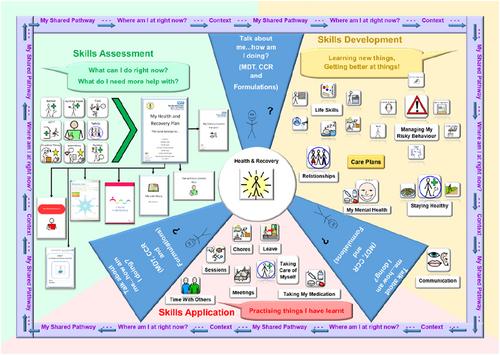Models of care in secure services for people with intellectual and developmental disability: Implementing the Walkway to Wellness
Abstract
Background
Changes to policy around inpatient services for people with intellectual and developmental disability (IDD) who offend, have led to a need for services to reconsider their models of care. This has led to calls for more tailored, patient-centred care models, with less reliance solely on offence-related treatment programmes which can be unsuitable for a growing proportion of patients with more complex cognitive and behavioural difficulties. In response, the Walkway to Wellness (W2W) was developed at one National Health Service Trust providing secure services to people with IDD, with the intention of delivering a more collaborative, co-produced and goal-oriented care model that was better understood by staff and patient stakeholders.
Aims
To evaluate the implementation of the W2W using Normalisation Process Theory (NPT), an evidence-based theoretical approach is used across a number of health settings.
Methods
Staff were invited to complete a short questionnaire, using the NPT informed Normalisation Measure Development questionnaire, at two time points along the implementation process. Patients were invited to complete a simplified questionnaire. Both groups were asked for their views on the W2W and the process of its implementation.
Results
Although the W2W was more familiar to staff at the second time point, scores on the four NPT constructs showed a trend for it being less embedded in practice, with significant results concerning the ongoing appraisal of the new model. Patient views were mixed; some saw the benefit of more goal-oriented processes, but others considered it an additional chore hindering their own perceived goals.
Conclusion
Early involvement of all stakeholders is required to enhance the understanding of changes to models of care. Live feedback should be used to refine and revise the model to meet the needs of patients, carers and staff members.


 求助内容:
求助内容: 应助结果提醒方式:
应助结果提醒方式:


